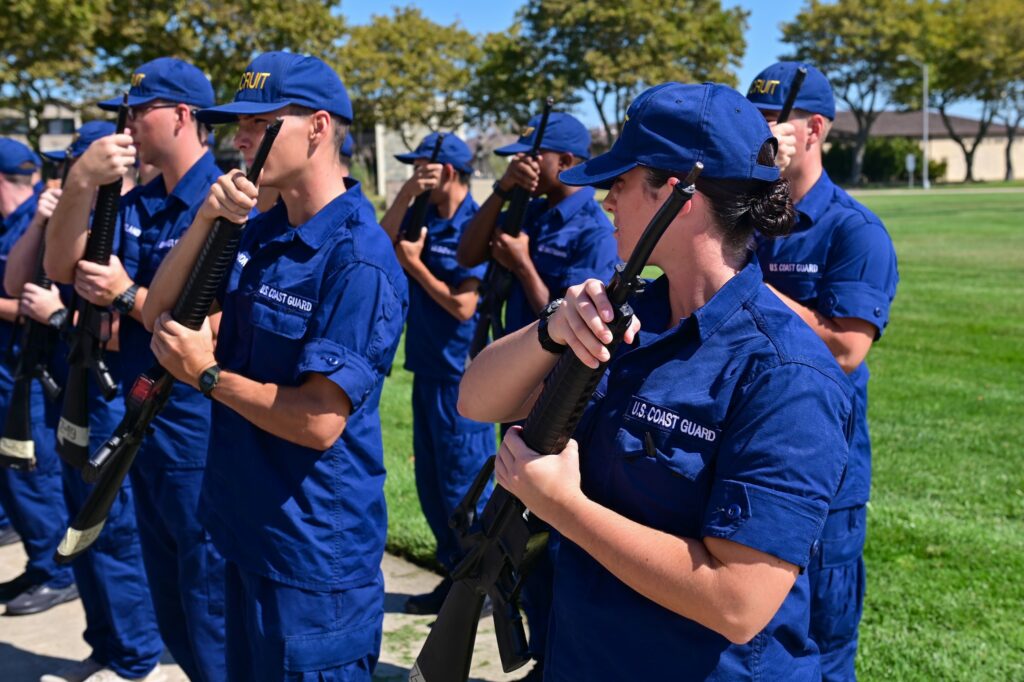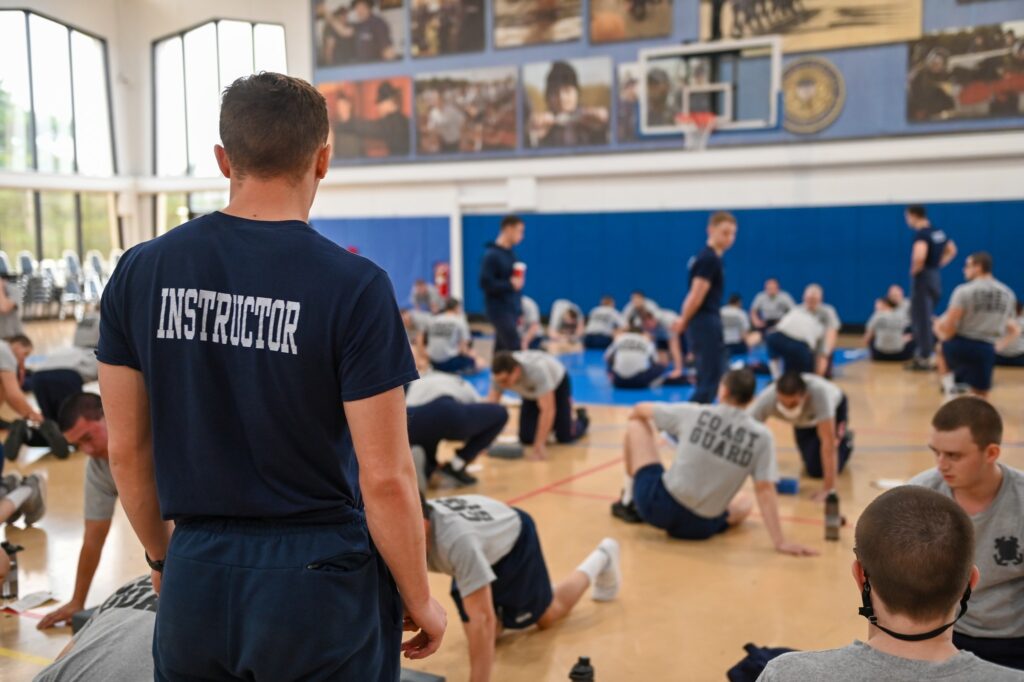INTENSIFICATION READINESS
“FORGING RESILIENCE”

Building Strength, Discipline, and Accountability
Week 2 at Training Center Cape May plunges right into it. This week marks a significant shift in your recruit’s training, focusing heavily on physical fitness and familiarizing them with military customs, courtesies, and close-order drill. These critical elements set the foundation for their success throughout basic training and beyond.

Physical Fitness: Breaking Limits and Building Resilience
During Week Two, recruits engage in intense physical conditioning, including TRX circuit training, their first swim assessment, and multiple bike workouts. These sessions are designed to develop both endurance and strength, equipping recruits for the physical challenges of Coast Guard duties. However, the focus extends beyond just physical fitness—each workout is an opportunity to build mental toughness. Cultivating this resilience is essential, preparing recruits to stay composed and effective under pressure throughout their service careers.

Embracing Coast Guard Customs and Values
Later in the week, recruits begin to absorb the essential military customs and courtesies that will shape their behavior throughout their careers. They dive into the Coast Guard’s core values—Honor, Respect, and Devotion to Duty— exploring what these principles mean not only to the organization but to them personally. Through teamwork and shared experiences, recruits learn how these values guide every aspect of Coast Guard life. Developing this understanding is crucial for thriving in a collaborative, service-focused environment, where success depends on mutual trust, discipline, and respect for the mission and each other.
Rates, Responsibility, and Watchstanding
Next, recruits will be introduced to the concept of rates within the Coast Guard. Every enlisted recruit starts as a Seaman Recruit (E-1), which defines both their initial responsibilities and pay grade. As they advance through training and into their careers, their rate will reflect their growing role, expertise, and contribution to the Coast Guard’s mission.
Recruits also receive their first M-16 training rifle, a critical moment in their development. Although the rifles are plastic replicas, recruits are required to treat them with the same care and respect as real firearms. This process instills accountability early on, reinforcing the importance of safeguarding military equipment throughout their service.
In addition, recruits complete their first watchstanding shift—a core duty they will perform regularly throughout their careers. Watchstanding requires recruits to enforce orders, maintain vigilance, and ensure operational readiness. These shifts simulate real-life responsibilities they will later carry out on ship decks, in engineering stations, and at radio command centers. Mastering these tasks helps recruits develop the discipline, teamwork, and attention to detail necessary to meet the operational demands they will face in the fleet.
Connecting with the Company Mentor
One of the highlights of the week is the introduction of the company mentor—a seasoned Coast Guardsman currently serving in the fleet. This mentor provides recruits with valuable guidance throughout the remainder of boot camp, offering personal insights into life in the Coast Guard after graduation. These visits not only offer mentorship but also provide a brief reprieve from the intensity of training, giving recruits a chance to ask questions, reflect, and gain perspective. If they’re lucky, the mentor might even bring a snack or two, much to the dismay of their Company Commanders.
I’ll see you next week with more insights and stories during this pivotal time for you and your recruit.
Semper Paratus,
SgtMaj Paul Davis (USMC Ret.)
